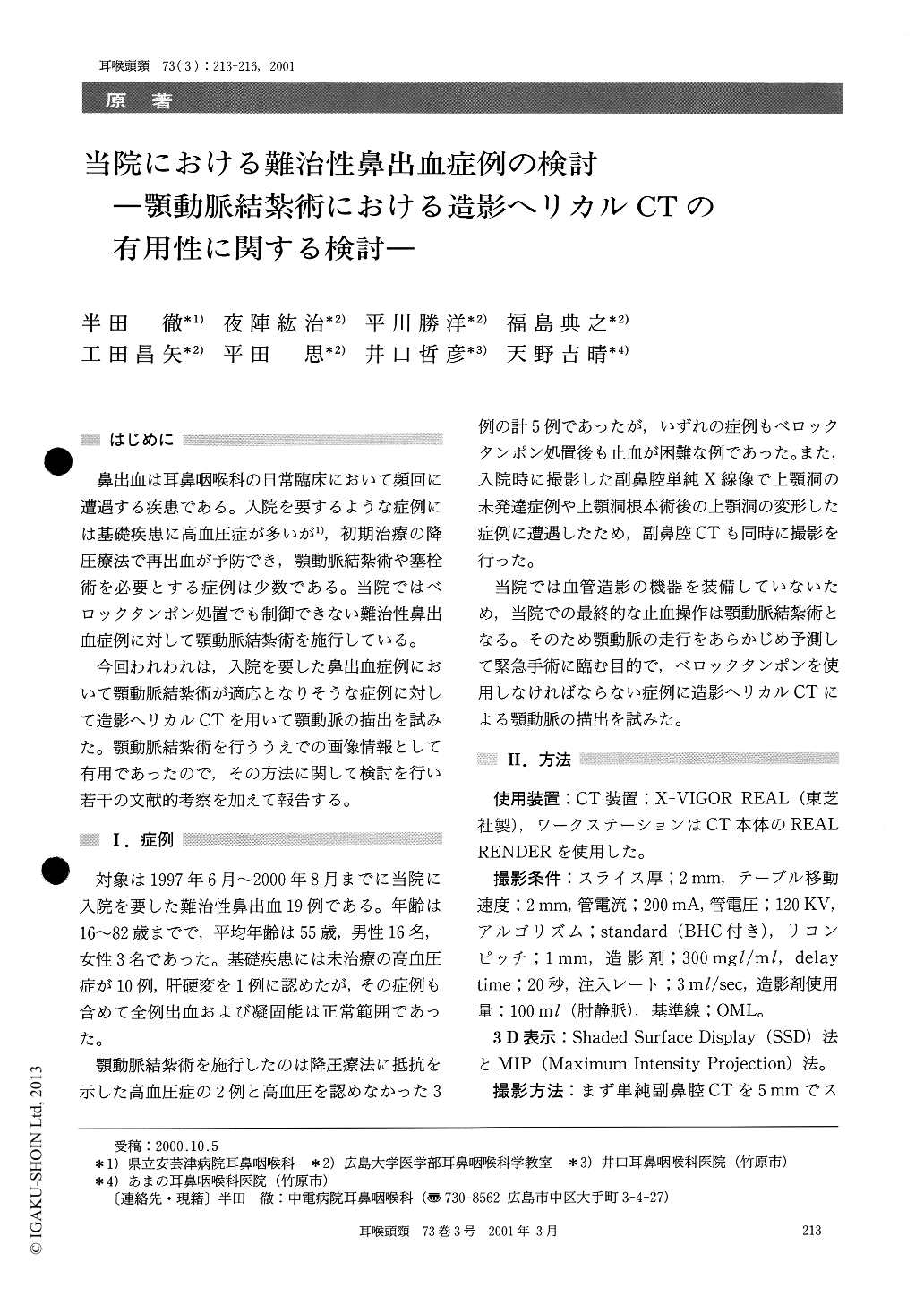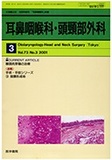Japanese
English
- 有料閲覧
- Abstract 文献概要
- 1ページ目 Look Inside
はじめに
鼻出血は耳鼻咽喉科の日常臨床において頻回に遭遇する疾患である。入院を要するような症例には基礎疾患に高血圧症が多いが1),初期治療の降圧療法で再出血が予防でき,顎動脈結紮術や塞栓術を必要とする症例は少数である。当院ではベロックタンポン処置でも制御できない難治性鼻出血症例に対して顎動脈結紮術を施行している。
今回われわれは,入院を要した鼻出血症例において顎動脈結紮術が適応となりそうな症例に対して造影ヘリカルCTを用いて顎動脈の描出を試みた。顎動脈結紮術を行ううえでの画像情報として有用であったので,その方法に関して検討を行い若干の文献的考察を加えて報告する。
Sever posterior epistaxis is one of the serious clinical problems. Nasal bleeding usually occurs in the anterior septal region, where it can be seen easily and controlled with topical cautery or local-ized packing. When the bleeding occurs in the pos-terior nose, it becomes a more serious problem. Manymethods have been used to control posterior epis-taxis. Some of these are electrocautery, posterior nasal packing, vascular ligation and therapeutic percutaneous embolization.
Between 1997 and 2000, nineteen patients were admitted to our hospital because of intractable epistaxis. There were 16 male and 3 female patients whose average age was 55 years. Ten of 19 patents were hypertensive, and none of these had undergo-ing treatment. Five of 19 patients received maxil-lary artery ligation. Clinical applications of 3 D imaging of the internal maxillary artery using helical CT scan were done for 5 patients. These images were helpful for planning of ligation of the internal maxillary artery.

Copyright © 2001, Igaku-Shoin Ltd. All rights reserved.


